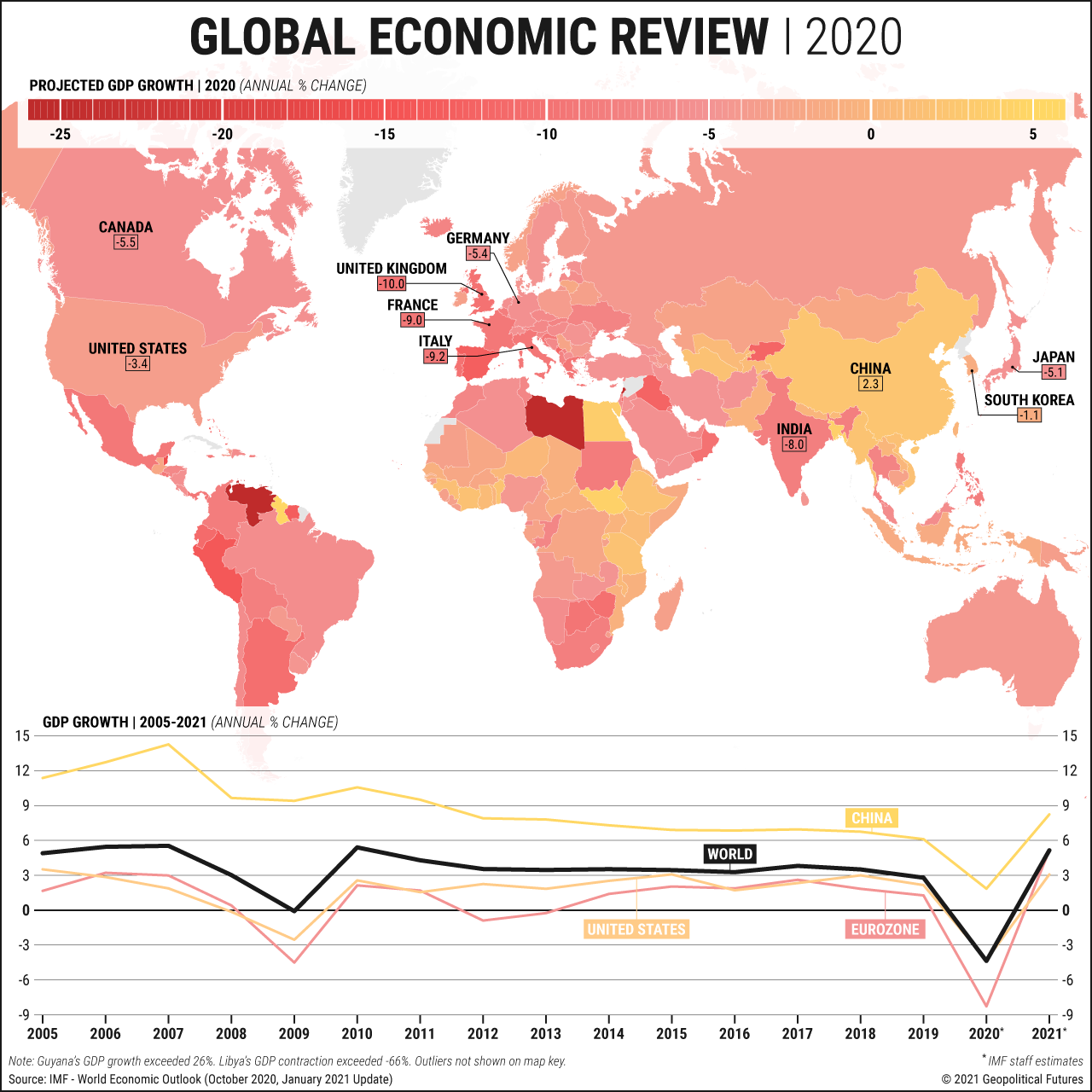The COVID-19 pandemic hurt everyone, but it didn’t hurt equally. Social distancing measures, both elective and government mandated, devastated businesses, particularly those that require face-to-face contact. Governments in many cases stepped in to cushion or delay the fall, but wave upon wave of infections pounded publics when societies tried to reopen. By the end of the year, the global economy had contracted 3.5 percent.
In the United States, output fell by roughly 3.6 percent for the year, a full percentage point more than it did during the worst year of the Great Recession and yet not as much as initially feared. In Europe and Japan, second or third waves prompted renewed lockdowns and put a damper on strong recoveries in the latter half of the year. The pandemic hit India at a time when growth was already slowing, and the result was staggering – including a nearly 24 percent drop in output in the second quarter alone. But among the major economies, China was the big exception. The Chinese economy dipped early in the year but recovered quickly, and it finished with 2.3 percent growth.
The outlook for the global economy is better in 2021 – though it could hardly be worse. The International Monetary Fund expects growth of 5.5 percent this year. But recoveries will occur at different rates, depending on a range of things like the pace and effectiveness of vaccine rollouts, fiscal responses (and capacities), citizens’ confidence, sectoral composition, and luck. Many economies will have to wait until 2022 to reach pre-pandemic levels of output.







